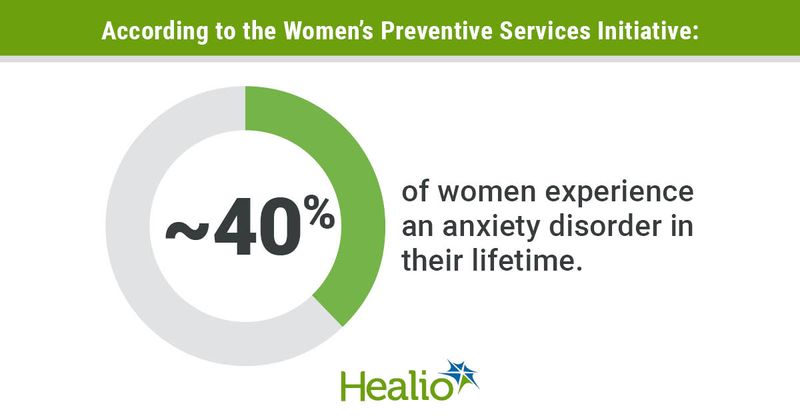Experts recommend anxiety screenings for teen girls, women
The Women’s Preventive Services Initiative, after reviewing more than 2,000 abstracts and 300 full-text articles, recommended that primary care physicians screen women and adolescent girls aged 13 years or older for anxiety.
The recommendation, published in Annals of Internal Medicine, applies to all women except those who are currently diagnosed with anxiety disorders.

“Anxiety disorders are very common among women, with approximately 40% of women experiencing anxiety disorders during their lifetimes, which is twice the rate of men,” Heidi D. Nelson, MD, MPH, MACP, FRCP, professor of medical informatics and clinical epidemiology and medicine at Oregon Health & Science University, told Healio Primary Care.

Nelson, who is one of the authors of the clinical guideline, noted that the Women’s Preventive Services Initiative (WPSI) is the first medical society to recommend routine screening for anxiety.
There are several ways to conduct anxiety screening, according to guideline co-author David Chelmow, MD, chair of the obstetrics and gynecology department at Virginia Commonwealth University Medical Center.

“Screening is best done with a structured brief screening tool, which can be administered by the clinician, a staff member, or self-administered by the patient on a tablet or paper,” he told Healio Primary Care. “Since depression screening is already recommended [by the U.S. Preventive Services Task Force], clinicians can consider using one of the tools that has been validated for both depression and anxiety screening like the Patient Health Questionnaire-4 and the Edinburgh Postnatal Depression Scale.”
The review also showed that cognitive behavioral therapy and medications are safe and effective for women with anxiety disorders who desire treatment, according to Chelmow.
Another co-author of the guideline, Kimberly D. Gregory, MD, MPH, director of maternal-fetal medicine at Cedars-Sinai Medical Center in Los Angeles, said that future research regarding anxiety in women should focus on:
- comparing routine vs. opportunistic screening;
- different screening intervals;
- long-term screening outcomes;
- how race/ethnicity affects anxiety screening;
- how social determinants of health influence screening;
- the impact of the risk factors, triggers, mediators and moderators of anxiety;
- changes in the incidence of anxiety and its prevalence over time; and
- the differences between adolescent and adult anxiety.
In a related editorial, Yale School of Medicine psychologists Kim G. Smolderen, PhD, and Matthew M. Burg, PhD, wrote that WPSI should be commended for drawing attention to a “significant public health problem.” However, they expressed concern “about insufficient attention to the conditions and context necessary to safely and effectively implement anxiety screening” in the primary care setting.
“Which of the 27 instruments that the WPSI reviewed should clinicians use for screening? What threshold scores should indicate need for further evaluation? How frequently should screening be conducted?” Burg and Smolderen wrote.
In response, Chelmow said PCPs should consider their skill set and the patient’s age.
“The tools are validated for different populations — adolescents, adults and pregnant and postpartum women. Clinicians should choose one appropriate for the patients they care for,” he said. “As I implement screening within my department, I will be working with my psychiatry department to implement the tool that they are most comfortable with. Many of us will screen but refer to others for diagnosis and management.”
Nelson added that “each instrument is scored differently and have specific thresholds indicating likelihood for anxiety.” She also noted that “no studies have evaluated the frequency of screening, but including anxiety screening during routine visits [such as the well-woman yearly visits], similar to depression screening, would be a reasonable approach.”
Burg and Smolderen also encouraged more efforts to reduce the “staggering” number of women who have anxiety.
“A comprehensive national public health approach to prevent anxiety is warranted,” they wrote. “Tools like the WPSI screening recommendations directed toward vulnerable groups are great first steps but only one of the many elements needed to address mental health crises.”
References:
- Gregory KD, et al. Ann Intern Med. 2020;doi:10.7326/M20-0580.
- Nelson HD, et al. Ann Intern Med. 2020;doi:10.7326/M20-0579.
- Smolderen KG, et al. Ann Intern Med. 2020;doi:10.7326/M20-3116.
